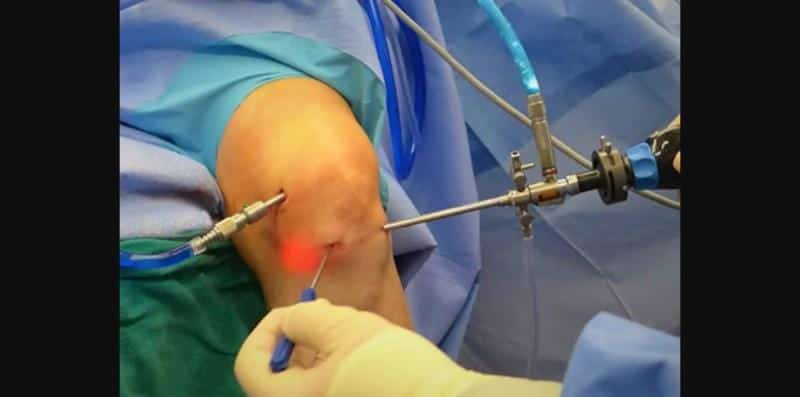Knee Arthroscopy - Minimally Invasive Diagnosis and Treatment
Knee Arthroscopy - Minimally Invasive Diagnosis and Treatment

Discover how knee arthroscopy can diagnose and treat a range of knee injuies. A small incision is made, and a long, thin tool with a camera is inserted, providing clear images of the knee. This minimally invasive procedure can help repair or remove damaged tissue and reduce recovery time.
Procedure Details
What happens before knee arthroscopy?
Prior to knee arthroscopy, it is important that you inform your healthcare provider about any medications you are taking, as certain medications may require you to stop taking them before the surgery. Food and water intake may also need to be restricted the night before the procedure.
The procedure is usually performed in a surgery center or hospital, and anesthesia is given according to your healthcare provider's recommendation. Local, regional, or general anesthesia may be used to ensure that you do not feel any pain during surgery.
What happens during knee arthroscopy?
During knee arthroscopy, a small incision is made in the knee and a long metal tool known as an arthroscope, with a camera on the end, is inserted. Images from the camera are transmitted to a screen in the operating room, allowing your healthcare provider to diagnose any injuries or structural problems. If surgery is required, tiny tools are inserted through other incisions to help repair or remove damaged tissue.
What happens after knee arthroscopy?
Knee arthroscopy is an outpatient procedure, and patients usually go home the same day. Pain and swelling are common, and it's important to rest the knee and keep it elevated. Physical therapy may be recommended to help regain strength and mobility in the knee.
Risks / Benefits
What are the advantages of knee arthroscopy?
Knee arthroscopy is a minimally invasive procedure that typically requires less recovery time than traditional open surgery. There is also a lower risk of infection due to the smaller incisions.
What are the risks or complications of knee arthroscopy?
The risks of knee arthroscopy are low, and include bleeding, infection, knee stiffness, and swelling. If you experience any complications, be sure to contact your healthcare provider.
Recovery and Outlook
Recovery time after knee arthroscopy varies, and recommendations for returning to daily activities will be given by your healthcare provider. PT may help regain strength and mobility in the knee and to avoid further injury.
When to Call the Doctor
Contact your healthcare provider if you experience any complications such as bleeding, signs of infection, or severe pain that does not go away with pain relief medication.
Learn More About Knee Arthroscopy >What to Expect After a Knee Arthroscopy?
Knee arthroscopy is a minimally invasive procedure that requires only a short time in the operating room and a brief period in the recovery room. Most patients can go home on the same day, and the entire process usually takes just a few hours from start to finish.
How Long Does an Arthroscopy Take?
Arthroscopic knee surgery is a minor procedure that typically takes between 30 and 45 minutes to complete. Most patients will require general anesthesia during the operation.
Is an Arthroscopy Painful?
Arthroscopic surgery uses small incisions, which means it can get patients back to their normal activities quickly with minimal scarring and pain. Patients can generally expect to return to their normal activities, with some restrictions, within a few days.
How Painful Is Knee Arthroscopy?
Pain is common after knee arthroscopy, usually in the area where patients experienced pain before the procedure, as well as in the soft tissues below the kneecap, above the incisions, and sometimes throughout the entire knee. Pain typically improves within two to three weeks but can take up to six weeks to fully subside.
Other Resources:


